The way we work has changed dramatically in the past few weeks, so what can you do to keep employee motivation high in these unprecedented times?
As many organizations see these times as uncertain and troubling, they should take a step forward and take actions to reinforce trust in their workplaces and keep their employees motivated.
🔎Download the eBook “10 Principles of Modern Employee Communications” and learn how to communicate with the modern employee in today’s digital age.
Employee motivation, engagement, and the overall employee experience have been disrupted, but the importance of them in talent management remains high.
So, how can employers ensure that employees stay motivated, engaged and productive during and after this pandemic?
The Impact of COVID-19 on Employee Motivation
Remote work is here, and it’s here to stay!
This new trend does have a big impact on how companies operate and manage their human capital. Remote work has its positive and negative sides, but employers are the ones who need to find new ways around how to motivate their remote staff and keep their productivity levels high.

What is gained by reducing commute times and increasing flexibility can often be lost in a lack of social interaction and collaboration. Even though there are companies for which remote work is not a novelty, many of them didn’t have prior experience with the whole team working from home.
Now, employers need to ensure that their employees feel motivated, engaged and connected, and this should become a top priority to ensure their productivity and well-being.
While many organizations had to rush into remote working arrangements in the past few weeks, it is essential that they also understand that such arrangements need to balance the needs of employees and the company.
Today, some employers have started getting back to the normal, or better said the “new normal”. While some organizations are mandating employees’ return to their offices, others are considering keeping remote work as an option. But the ones that do so need to pay particular attention to the employee experience they deliver and its impacts on employee motivation.
Indeed, a HBR research on employee motivation in COVID-19 times shows that employees who worked remotely during the lockdown were less motivated and those who had no choice about it were the least motivated of all.
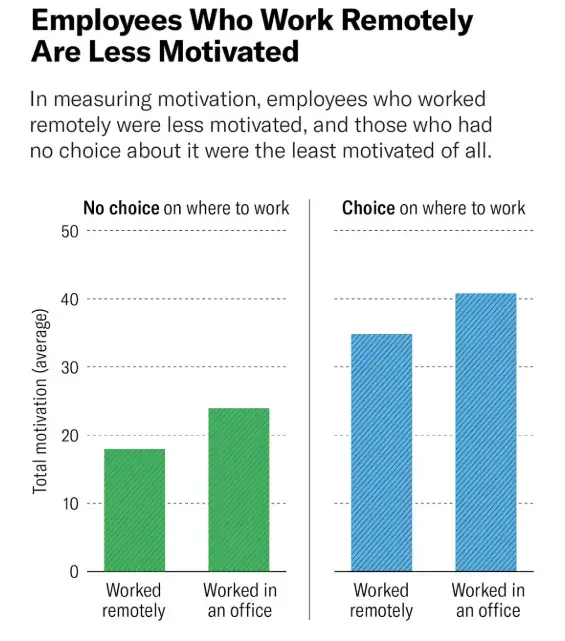
Analysts found that several factors that had a negative impact on employees’ motivation during the global lockdown and those include emotional pressure and economic pressure.
Indeed, people got worried about loosing their jobs and protecting their health and their concerns considerably increased when companies started to shut down some of their plants, close their shops and lay off a part of their workforce. The abundance of information and news, questions on how to safely get groceries, and fears for their relatives were deeply distressing.
Even though the worst of the pandemic might be behind us, people may keep bad memories of their two-month work from home experience because of the economic and emotional pressure mentioned earlier. That’s why companies that consider offering flexible work arrangement after the pandemic must make employee motivation one of their top priorities.
What Factors Could Affect Employee Motivation?
In the Harvard Business Review article mentioned above, the authors have identified negative motivators that often lead to reduced work performance. But they have also identified three positive motivators that often lead to increased work performance and that may be negatively affected by the current pandemic.
Play is one of those motives that most boosts performance and motivation, but it could decrease if it continues to become harder for people to get things done from home. For example, employees in your workplace may eventually start missing the joy of problem-solving with their colleagues, or the ease of making a decision when everyone is physically connected.
Purpose could also decline with the lack of transparency and visibility into their impact on clients or colleagues, especially if no one is there to remind them on their achievements and results. Lastly, potential could decline if people don’t have an easy way to reach their managers and colleagues who teach and develop them and with whom they are used to have meaningful conversations.
That being said, if business leaders, and organizations overall, don’t do anything to mitigate these negative effects, people’s motivation will ultimately decrease. As the consequences, there will be a decline in adaptability, work quality, and creativity just at the time when the post-pandemic recovery will require productivity growth.
So, how to ensure that your employees stay motivated in these challenging times?
How to Drive Employee Motivation in the Workplace
A 2020 research shows that highly engaged organizations are at least twice more likely than other organizations to clearly communicate, listen to their employees, give them frequent feedback, and have leaders and managers who have a strong affinity with their teams.
So let’s take a look into some actionable tips for improving your employees’ motivation and engagement in these unprecedented times.
1. Take this moment as an opportunity for leaders to shine
This current situation has taught us that we need to stay true to our purpose, core values, principles and culture. In order to do so, we need more engagement from leadership as they are the ones from whom employees want to hear the words of encouragement and empathy.
Effective leaders are transparent, empathetic and they know how to create trust in the workplace. Therefore, their behaviors and actions help calm, support and even energize employees so that they feel like they are a part of a common mission and purpose, and embrace new ways of working.
Even though the way leaders communicate has always been an important factor in driving employee motivation, employees now need their support more then ever before.

During this crisis, many leaders also had to deliver some bad news to their remote employees due to the serious consequences the crisis had on some industries such as tourism and hospitality.
Some companies took an approach in which they tried to hide the bad news, which certainly wasn’t a good approach as employees prefer transparency. Others, however, did it in an empathetic, transparent and authentic, way which resulted in very positive reactions from people around the world.
One of them was the case of Airbnb, a global travel company that had to lay off more than 25% of their workforce due to the pandemic.
Read more about the Airbnb story.

2. Make agility one of your core company values
Crisis such as this one requires companies to be more agile and innovative in order to keep their staff engaged and motivated and to be able to rapidly adapt to the changing working environments. Companies with disengaged employees had much more struggle to adapt as their employees are not as aligned with their business strategies and core values as they should be.
Not being able to adapt to change quickly and fasten the decision-making process may seriously hurt your employees job satisfaction and, with that, their motivation to deliver good results.
In order to be more agile, organizations need to rethink their IC strategy. Becoming an agile organization can’t happen within organizations where there is silos, misinformation or lack of internal communication in the workplace.
Moreover, lack of the right and timely information flow within organizations is often the biggest barrier for becoming more agile and adaptable to change.
3. Make your new policies and procedures clear and easily accessible
Due to the pandemic, many organizations had to update their working policies and procedures. Moreover, companies with strong policies and procedures for emergencies are better positioned to address the challenges of the COVID-19 pandemic.
Organizations who were able to react quickly and develop effective business continuity plans are also much more likely to keep their employees safe, motivated and more productive.
However, many organizations are struggling when it comes to ensuring that all the important information and company updates are actually consumed and understood by their employees.
Not being able to find critical company information not only frustrates employees but it also results in lost of motivation as search for relevant information is proved to be one of the biggest blockers of employee productivity.
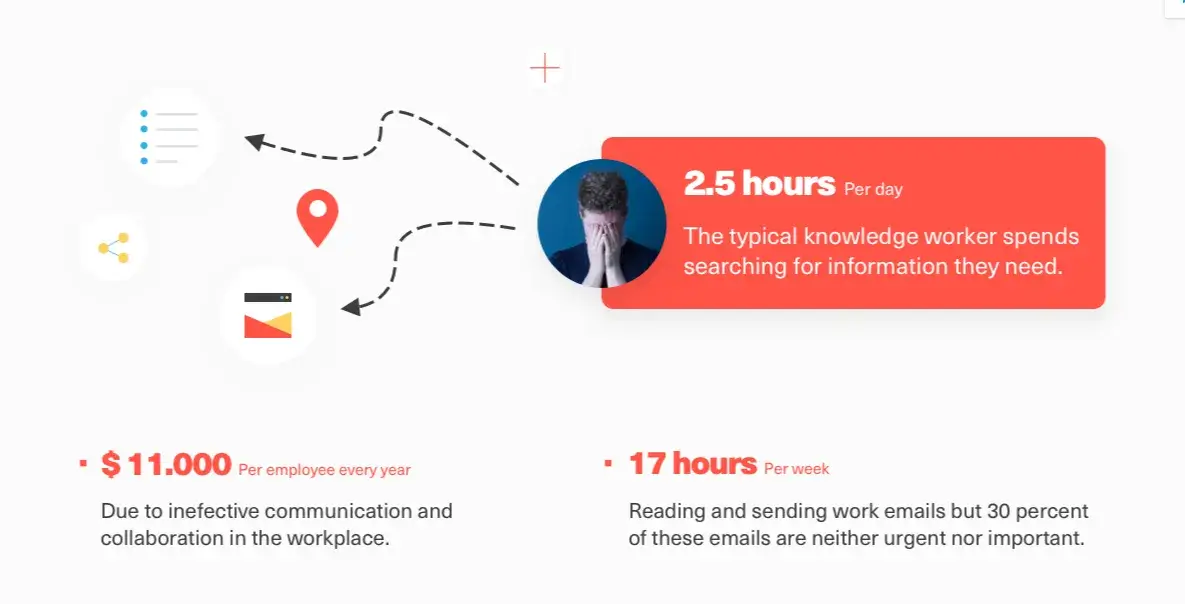
4. Empower managers with tools and information
More than ever, frontline managers and supervisors should have rapid and easy access to accurate information about the new company strategy, protocols and rules.
Local managers need to have the authority to effectively address pandemic-related issues in real-time. They should be able, using the right technology, to update their teams in a manner of seconds regarding the important company updates.
Many managers, however, don’t have access to employee apps that enable them to do so. Managers who don’t have a way to communicate with their teams effectively and ensure that their teams are always up to date with the important information, also see lower levels of employee motivation and engagement.
This is why we are seeing many organizations turning to new employee communication solutions that serves as a central communication platform for the entire workplace.
5. Prioritize empathetic and personalized communications
Employers should see this crisis as their chance to prove that they are here for their employees by building trust and demonstrating empathy.
However, this cannot be done using generic and non-personalized messages sent in bulk to an entire organization.
Some of your employees may feel more stressed than others. Some jobs may be at more risk. Some employees may be working in environments where their own health is at risk. Some are working from home and some are not. Some are deskless employees and others are not. Some may work in the US and some in Europe or other parts of the world.
So, is it wise to send the same internal messages to all of them?
Instead, employers need to find ways to personalize and localize their internal communication messages based on their employees’ roles, responsibilities, locations, languages that they speak and many other factors. Only then will your employees believe that you are being empathetic and that you truly care about their wellbeing.
However, many companies don’t have an easy way to segment their internal audiences based on such attributes and employee characteristics. As a result, employees often get generic and non- personalized messages which they tend to ignore.
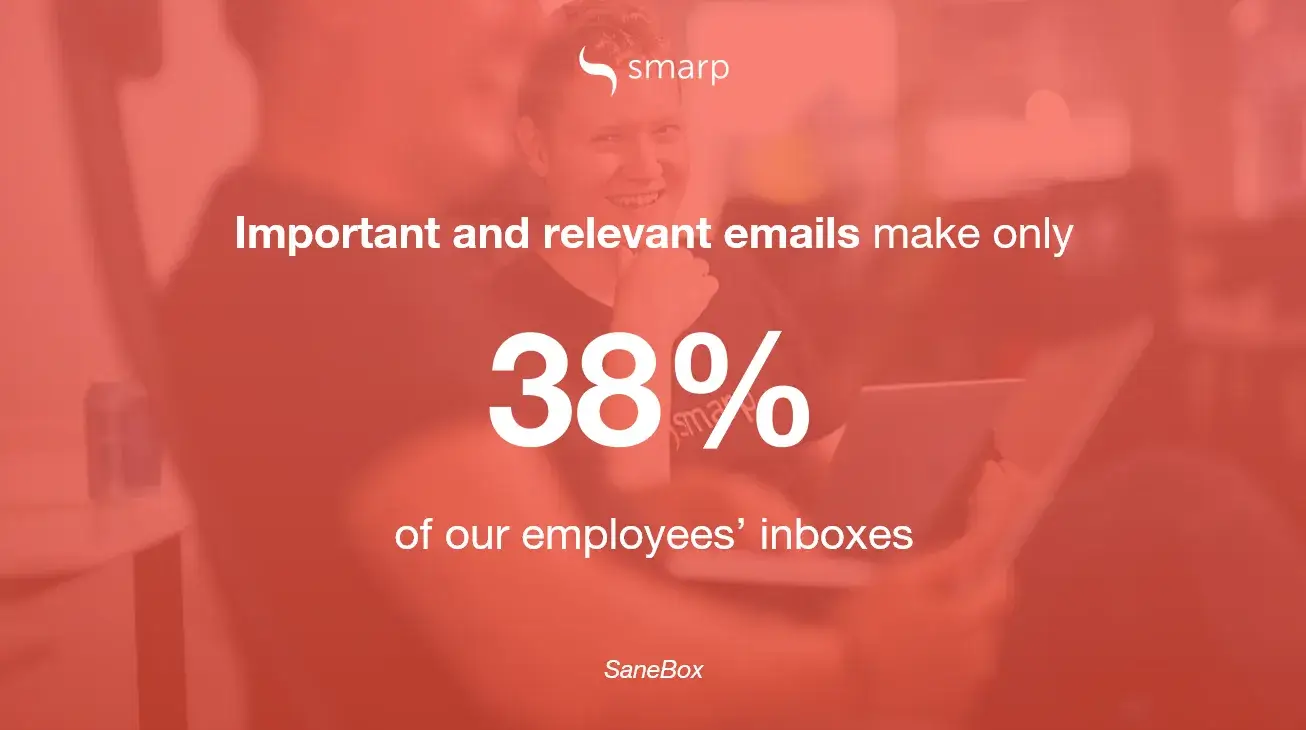
6. Be active with employee listening
Soliciting opinions and listening to employees is an important signal that the organization cares; it can help reduce employee anxiety, build trust and boost employee motivation.
Managers and leaders are the ones that need to open their ears and listen to their employees’ concerns and needs. This is why we see many employers sending regular employee surveys designed specifically for the current situation.
Even though employee surveys can help managers better understand their employees, this is an example of one-way communication. Instead of just sending surveys or internal newsletters, managers, as well as HR and internal communications professionals, need to ensure that the entire workplace can participate in an open, two-way communication.
When this is achieved, employees feel more engaged in the company’s conversations which naturally makes them more motivated to do their jobs successfully.
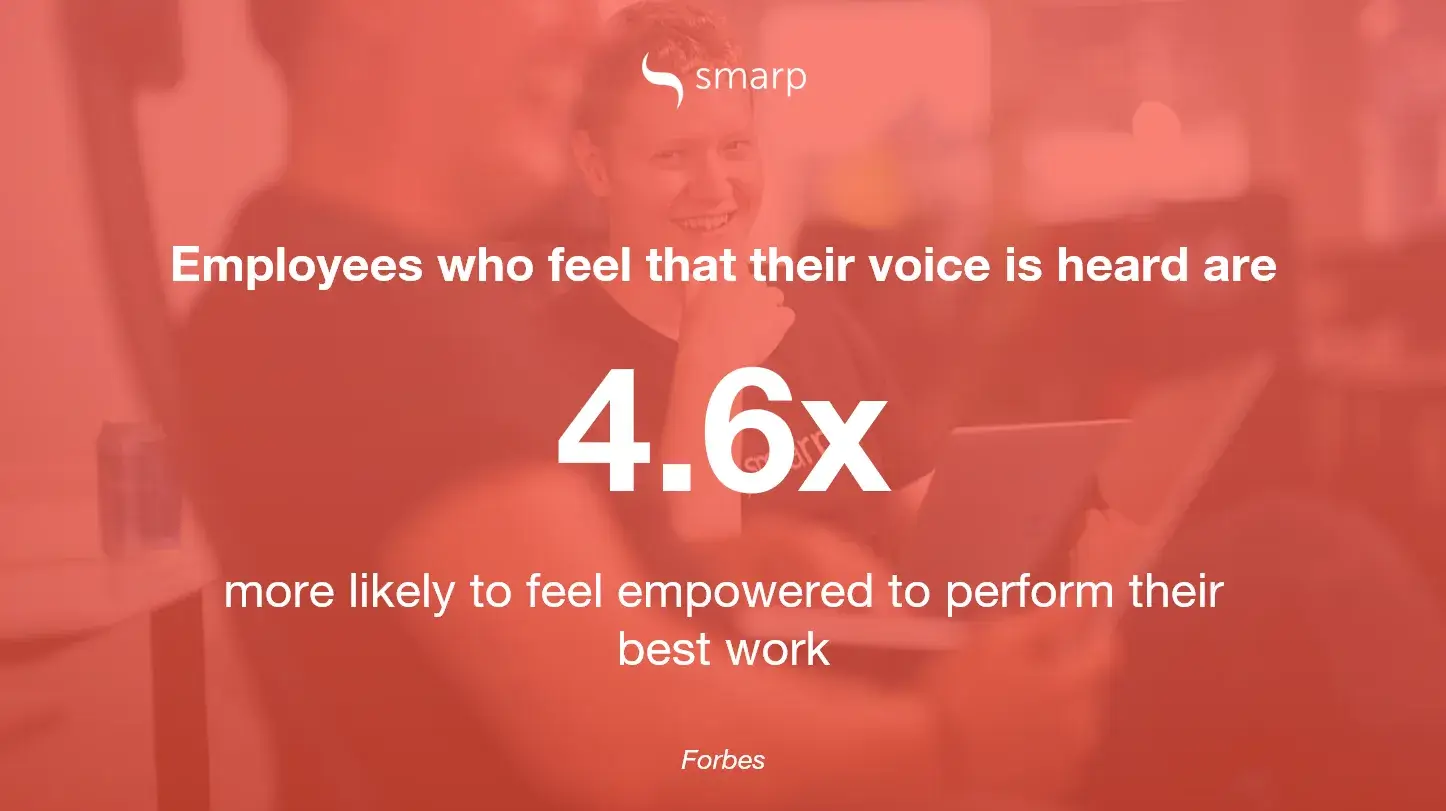
7. Connect employees using new technologies
A recent survey of 2,000 participants in flexible work arrangements in China, the first country to aggressively move in this direction in response to the crisis, indicated that 63% were supportive of remote work, with 55% believing that their employer provided them with the software, tools and resources to work effectively.
That’s half of the workforce. What happens with the rest?
Even though we are seeing a big improvement in employers digitalizing their internal processes, some are still struggling to find and implement appropriate solutions that would keep their employees connected and motivated.
With large numbers of employees working from home, it is important to ensure that all employees retain a strong sense of connection which directly impacts employee motivation and engagement. Employers should consider new and engaging technologies which can be accessed via mobile phones.
This is the reason why we see many employers turning to new, modern employee communication software solutions that mimic employees’ favorite social media tools.
8. Drive the culture of teamwork and collaboration
Even though it is important to respect and use the organizational hierarchy, especially in large enterprises, to ensure information flows properly and accurately employers should also think of ways to bring employees at various levels together on one team.
The sense of teamwork and belonging plays an extremely important role in boosting employee motivation. Therefore, social collaboration and internal communication tools are now widely adopted by organizations that may have not used them before this pandemic.
Internal communication drives collaboration. When communication and information flows freely and openly among colleagues and those in other departments, it inspires efforts to collaborate, and it improves knowledge sharing.
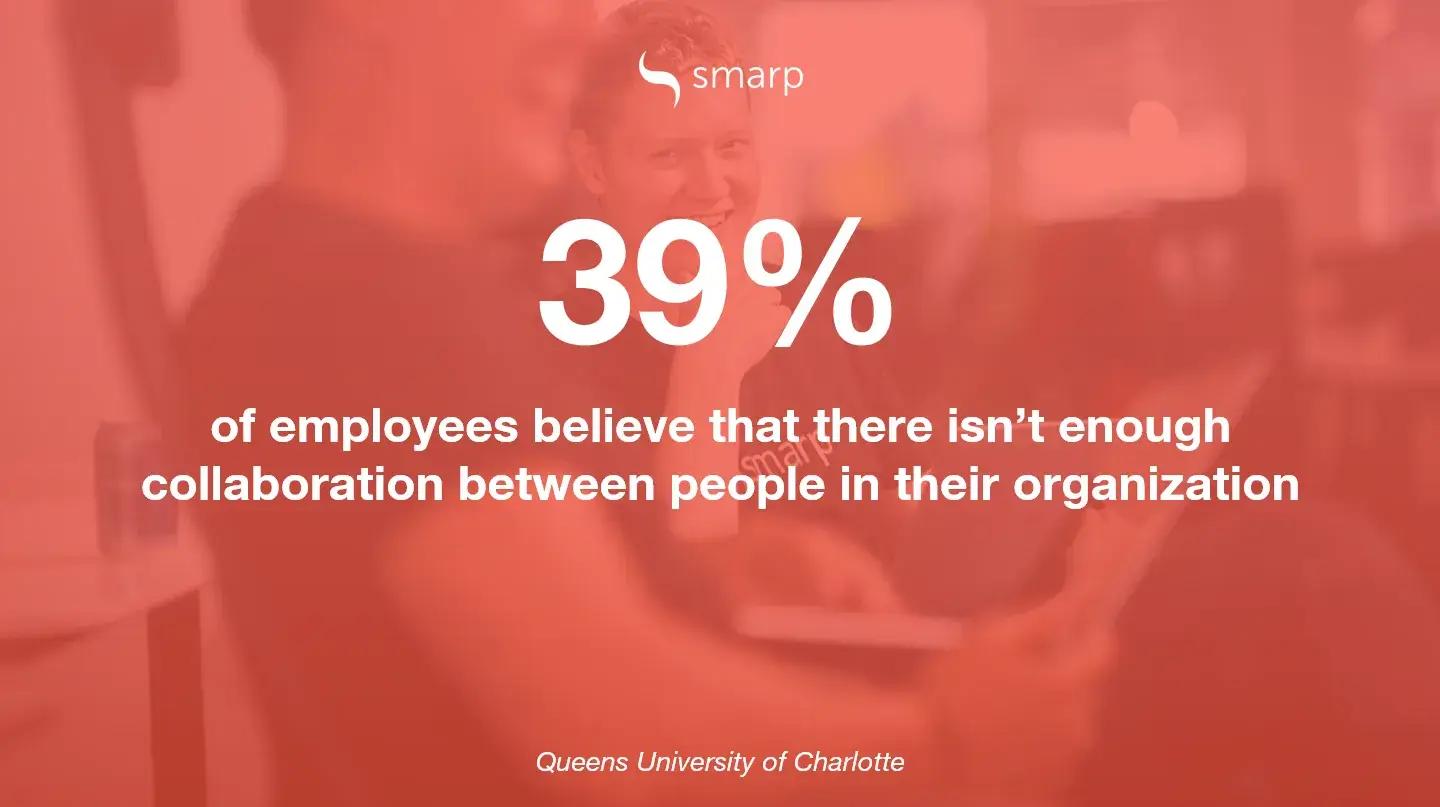
Having a collaborative environment is the best way to build healthy working environments. Spreading and encouraging such culture of collaboration is what will drive a positive employee experience in your workplace and boost employee motivation even when your employees are not physically together.
9. Make work more meaningful for your employees
Finding meaningfulness in work is one of the biggest drivers of employee motivation.
People want to work for something more than just a paycheck, and people that find a great meaning in their work are much more likely to fee engaged and be more productive. A 2018 survey from Harvard Business Review reveals that more than 9 out of 10 employees would be willing to trade a percentage of their lifetime earnings for greater meaning at work.
Additionally, employees who find work highly meaningful are 69% less likely to plan on quitting their jobs within the next 6 months, and on average, have job tenures 7.4 months longer than those who lack meaning.
Another study from American Express reports an average of 62% of millennial workers want to be known for making a positive difference in the world, and 75% say it is important for the values of the company they work for to match their personal values.
10. Encourage your employees to give feedback
Solicit and welcome feedback. A critical component of employee motivation and engagement is that employees feel that they are heard. Therefore, soliciting feedback demonstrates your willingness to listen to them.
This is why, during and after this pandemic, managers should make more space for employee feedback. Don’t assume that your team will bring concerns to you or feel comfortable sharing how they are feeling. Instead, ask questions and find out what they need from you. Find out about their worries and concerns. Do they feel aligned with the business goals and how are they coping with the current pandemic situation?
How Employee Experience Influences Employee Motivation and Engagement
Results from Brandon Hall Group’s 2020 Employee Engagement Study show that employees are 146% more likely to be somewhat engaged or actively disengaged than highly engaged.
Therefore, employee motivation and engagement are some of the biggest concerns every employer has.
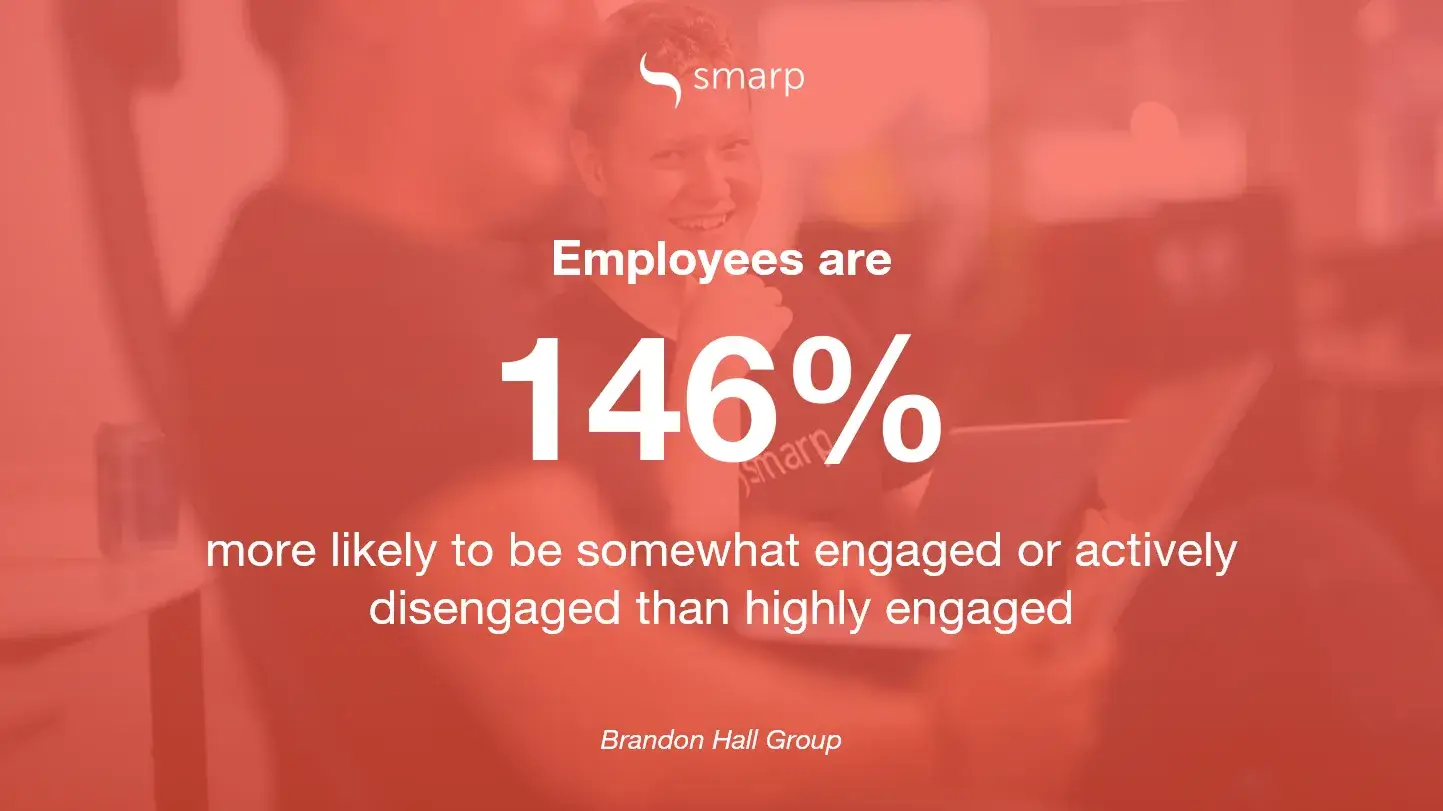
When measuring employee engagement, it is extremely important to understand what are the factors that drive motivation and engagement. This is why employee experience is an emerging HCM topic. It is considered that employee engagement is an outcome; the result of the experiences employees have every day on the job. Simply put, if your employees have better experience at work, they are more likely to be engaged.
Employee experience, however, is a broad term. But here are some of the most important factors that influence your employees’ experience and, therefore, motivation and productivity:
- Open workplace communication
- Trust in the workplace
- Authentic leadership
- Approachable managers
- Frequent top-down feedback
- Frequent peer-to-peer feedback
- Clear goals and alignment with the overall business strategy
- Frequent updates on company news and changes
- Agile decision making
- Easy team collaboration
- Opportunities for career development
- Recognition and appreciation for good work
- Work flexibility and work-life balance
However, before throwing a bunch of programs to boost employee motivation and engagement, develop a deep understanding of the quality of your employees’ everyday experiences. Below is a helpful exercise from Brandon Hall Group. Identify several types of employee experience moments in the workplace. Then, identify what the best experience looks like and what the worst experience looks like.
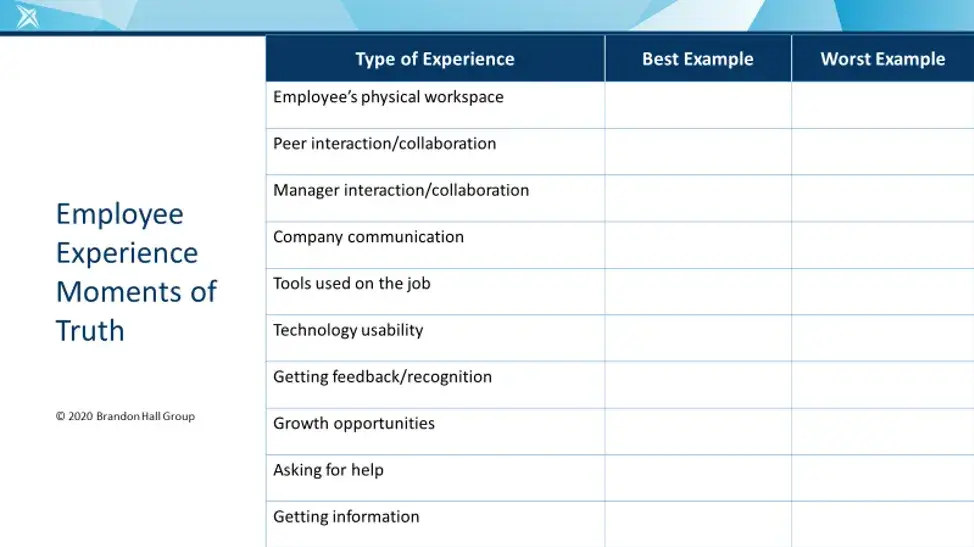
Personalization Is the Future of Employee Motivation and Experience
Even though we are still not sure about what the future of work will bring to us, one aspect is already taking place: personalization.
Personalization in the workplace is becoming more than just an afterthought. It is becoming the new norm in the workplace. There is no “one size fits all” approach when it comes to workplace productivity. Therefore, enabling employees to choose the processes and devices that work for their unique needs is crucial in fostering employee motivation and a high-performing culture.
In our personal lives, we are already used to choosing tools that best fulfill our needs. Why should this be different in professional settings?
As many employers have started realizing the importance of personalized employee experience, they have started implementing new technology solutions that enable them to do so.
Picture an employee app that allows your employees to have news feeds tailored to their specific needs, roles, locations and interests. Imagine a solution that enables your employees to find the latest company updates, relevant messages from their colleagues and managers and all the documents they need to do their jobs successfully in seconds.

With such solutions, employees can finally say goodbye to opening up multiple apps to find files or messages a colleague sent to them. The future of work requires employee apps that help employees connect, communicate and work with each other.
When this is achieved, information in the workplaces flows across applications seamlessly, eliminating silos and creating a more cohesive work experience all while boosting employees’ motivation and productivity.










